Dinner doesn't have to feel like chaos every single night. In this free series, I'll show you how to use the Dinner Rhythm Blueprint to finally take the pressure off mealtime and make family dinners feel doable again.
👉 This is Part 1 of the Dinner Rhythm Blueprint series. If you'd like the big picture, head to the DINNER RHYTHM BLUEPRINT HUB to follow along with every step in order.
IMPORTANT [WATCH VIDEO #1] How to Start Your Dinner Rhythm 👇👇
This is the part you don't want to skip. These workshop videos are the heart of the Dinner Rhythm Blueprint-why your old meal plans never worked, why this system feels lighter, and how it can finally take the stress off your shoulders.
👉 You can watch it like a video or just listen like a podcast while you fold laundry. Either way-don't scroll past this one. Press play now. This is where it all clicks. Press Play To Watch Now 👇👇
Next Lesson: What's Left in the Tank Test
📌 If you've finished this video, you can scroll down to read the full lesson-or head straight to Lesson #2 to watch the next video.
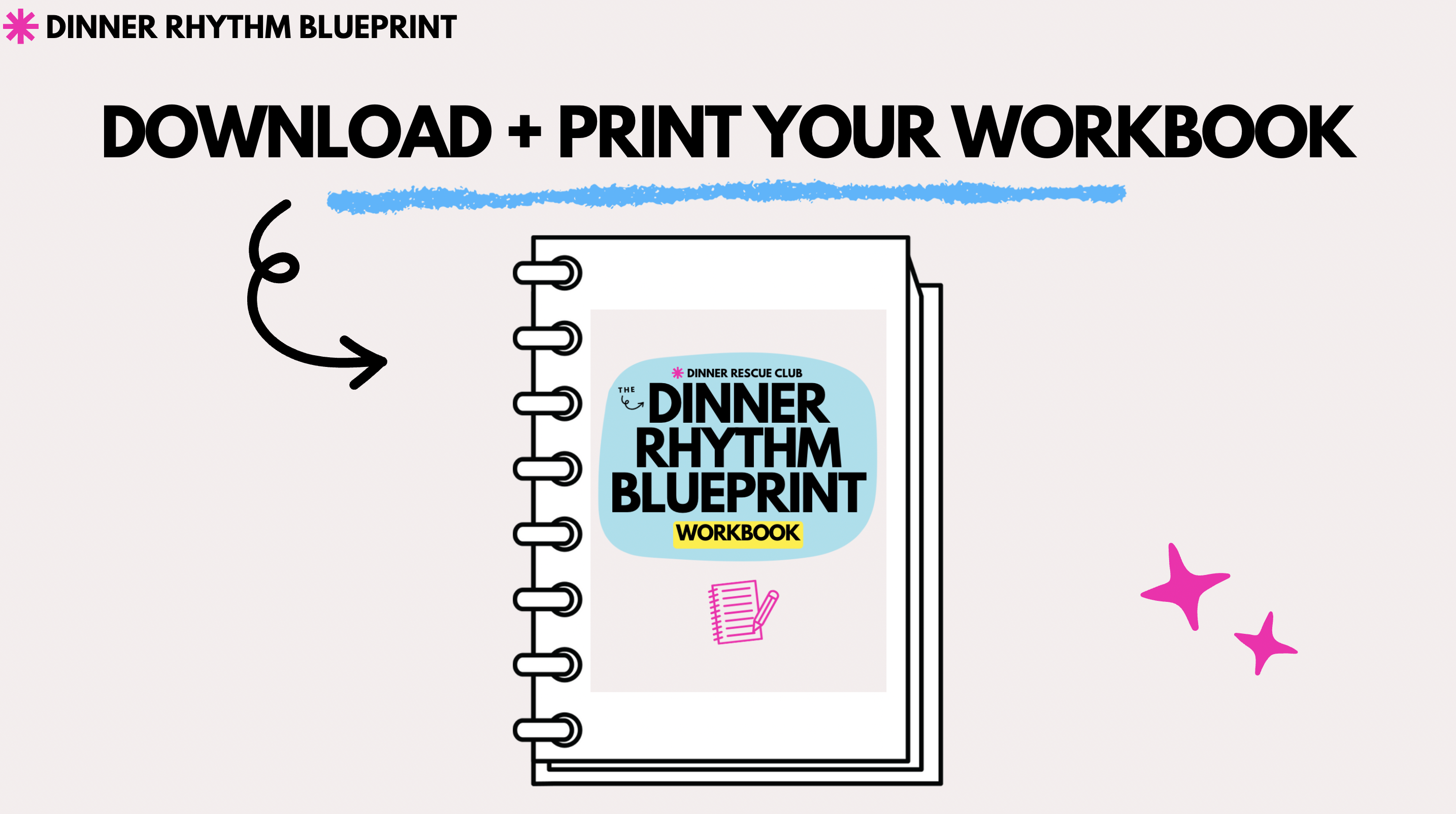
Grab Your Free Dinner Rhythm Workbook 👇👇
To make this process even easier, I created a free Dinner Rhythm Workbook you can print and use alongside this series. You'll find simple worksheets for each lesson-so you're not just reading, you're actually mapping out your rhythm in real time.
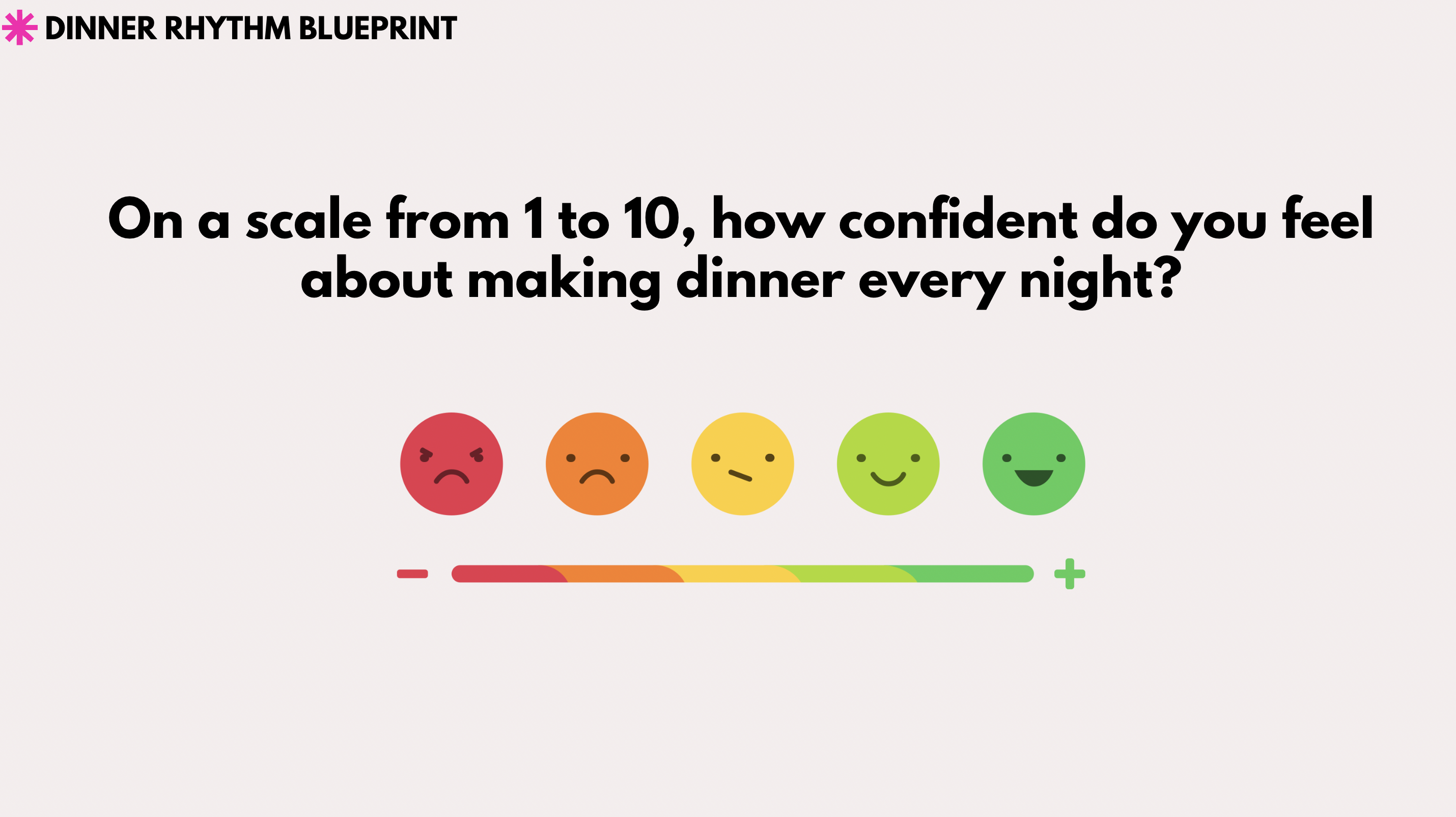
Quick Gut Check: How Do You Really Feel About Dinner?
Let's do this together-a gut check.
Right now-on a scale from 1 to 10-how do you honestly feel about making dinner most nights?
Picture this: it's 5:15 p.m. I knock on your door. What would I see?
- Would you be an 8-feeling good, with time to spare, maybe even excited to try something new? ✨
- Or are you closer to a 3-dragging yourself to the stove, silently praying no one asks "What's for dinner?" because, truthfully, you don't even know yet?
That number matters. More than you think.
Because it's not just about tonight-it's a snapshot of something deeper: how sustainable your current dinner system really is.
Or let's be real… if you even have one yet.
👉 If your number feels low? Don't panic. That's exactly why you're here.
But here's the challenge: I want you to write that number down. Yep, actually jot it down. Because later, when you've built your rhythm and things feel easier, you'll look back and realize: "Wow. That's how far I've come."
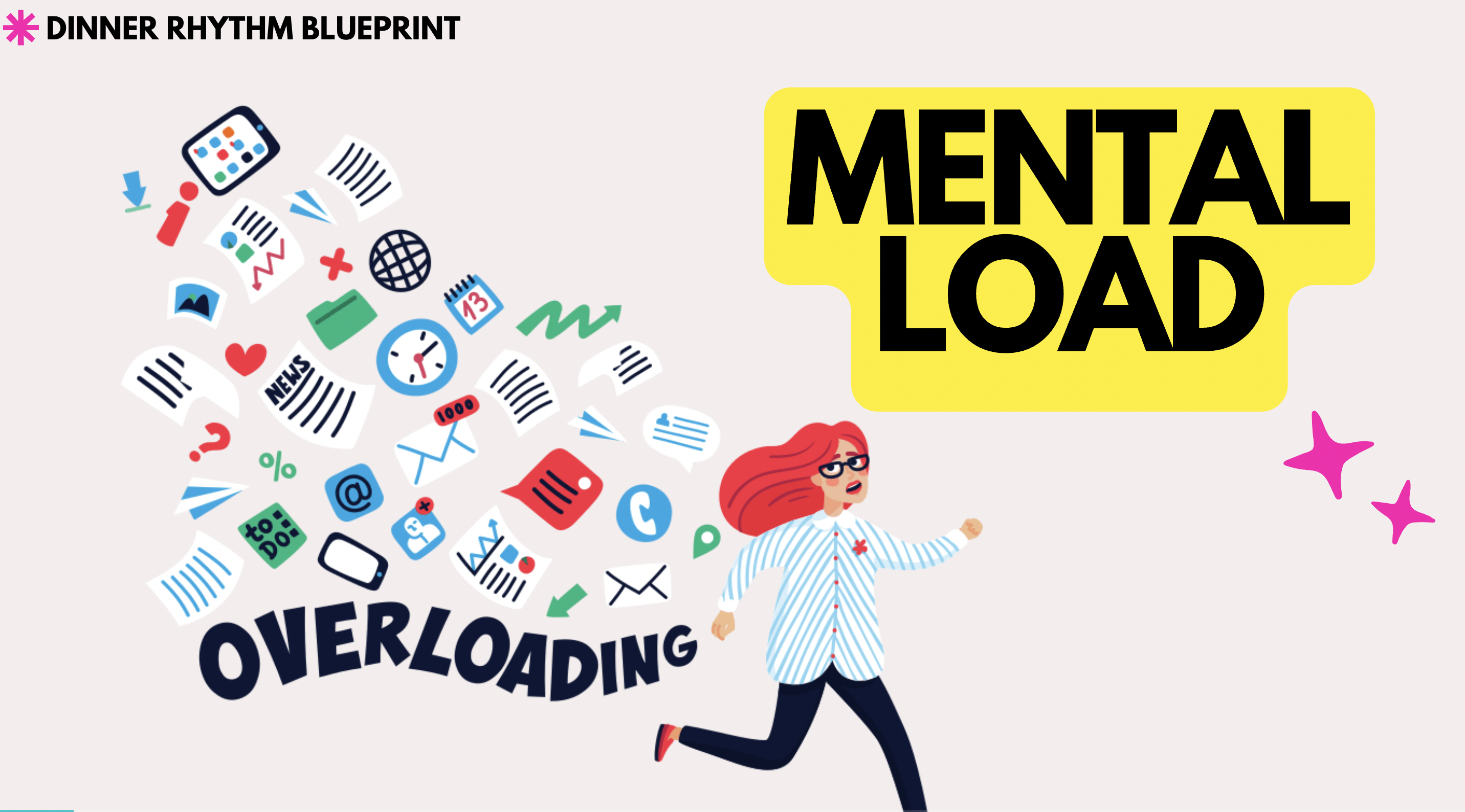
Why Dinner Feels So Heavy
Here's what we're about to do: take all that low-key pressure-all that buzzing decision fatigue-and finally get it out of your head and onto paper.
Because let's be real-the hardest part of dinner isn't the chopping, the stirring, or the cooking.
👉 The hardest part is the thinking.
The mental load of dinner sounds like this:
- What's for breakfast?
- Did I sign that field trip form?
- Is there milk left?
- When's the dentist?
- Do we have anything for dinner?
- Oh wait-did I move the laundry?
- Are we out of bananas again? 🍌
And then your kid wanders in with 27 random questions like:
- "Why do clouds form?"
- "Do horses dream?" 🐴💭
- "Why do we even have toenails?"
On a good day, you laugh it off. But on the hard days? You snap. You shut it down. And then comes the mom guilt spiral:
- "Why did I snap?"
- "I should be more patient."
- "I wish I was more fun."
And let's be honest-that guilt doesn't help. It just adds more weight.
This-this is why we're starting with dinner.
Because dinner is relentless. It doesn't care if you're tired, burned out, or stretched thin. It shows up every. single. night.
This shift-removing the constant decision fatigue-is also the secret to stress-free family dinners.
So instead of reinventing it over and over, we're going to build something repeatable. A rhythm. One that bends with real life. One that works for your people-and for you.
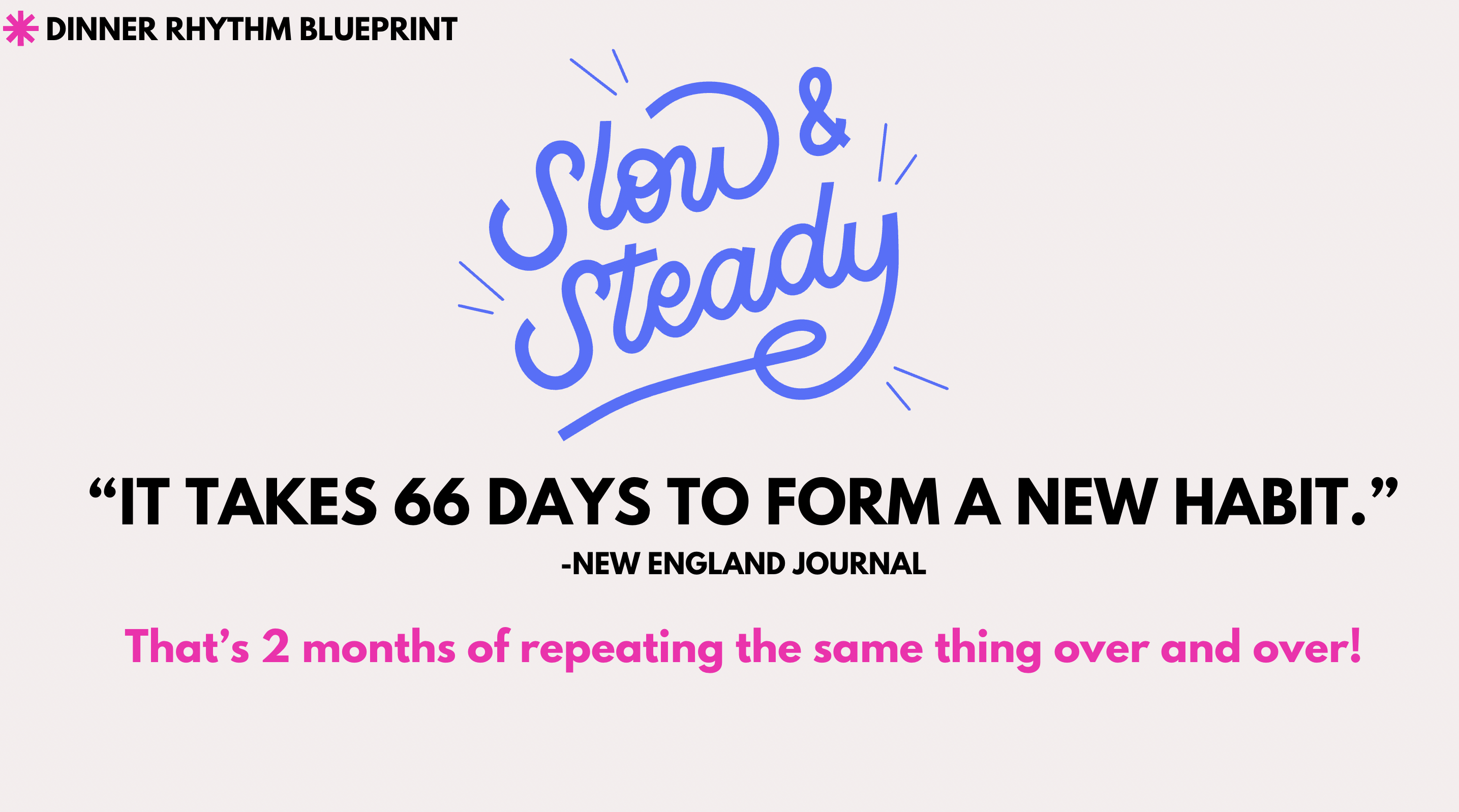
For My Perfectionists Out There 🙋♀️
Now listen… I know some of you are perfectionists (hi, I see you, I am you). And the second you hear "meal plan," your brain goes:
"Okay, I'm going to make seven totally new dinners that are healthy, made from scratch, and Instagram-worthy!"
I love that energy. I really do. But I need you to slow your roll.
Because here's the thing: a study published in the European Journal of Social Psychology found it takes about 66 days to form a new habit. That's two whole months of repeating the same thing before it becomes second nature.
So if you build a super complicated dinner plan right now-where every night is a brand-new recipe with gourmet flair-your brain is going to quit by next Tuesday.
Instead, we're building something you can actually repeat. Not something that needs to be remade every week like a wedding cake. 🎂
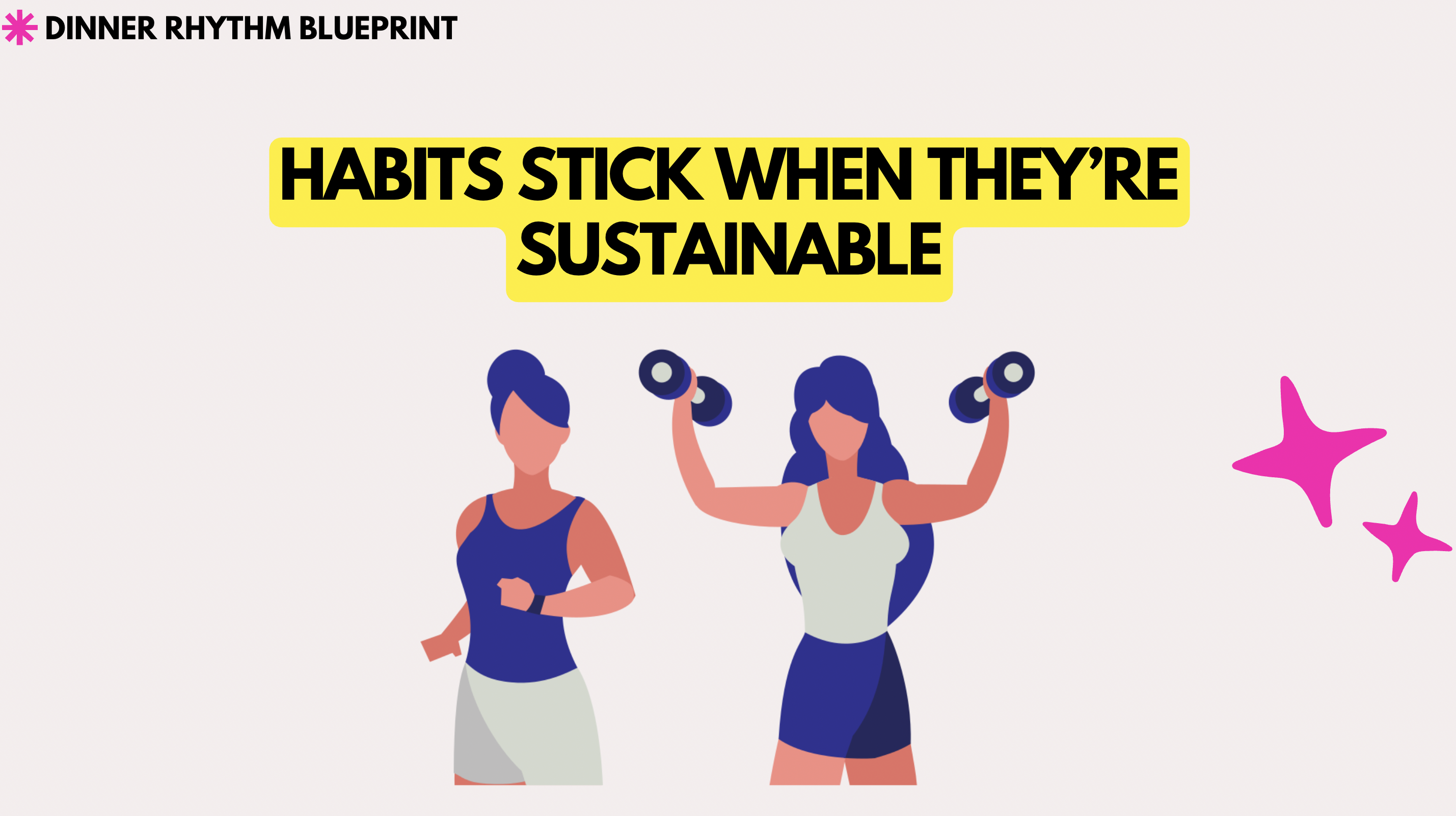
Why Rhythms Stick
Truthfully, I've never been great at sticking to a workout routine.
I've downloaded all the apps with the best intentions. I'd start a 60-minute daily challenge-burpees (ugh), complicated moves, and absolutely zero motivation.
It never lasted.
But then I found an app with shorter workouts-about 30 minutes. You only do them every other day. You can modify the moves. No fluff. No fancy equipment. Just dumbbells, a booty band, and a mat.
And for the first time? It felt doable. Not easy. But possible.
So I stuck with it. Two weeks went by. Then a month. Then two months. And before I realized it-it had become part of my rhythm.
That's how the best rhythms stick. They feel doable. They don't require overthinking. And because of that, you can do them for the long haul.
That's exactly how we're going to make dinner part of yours.
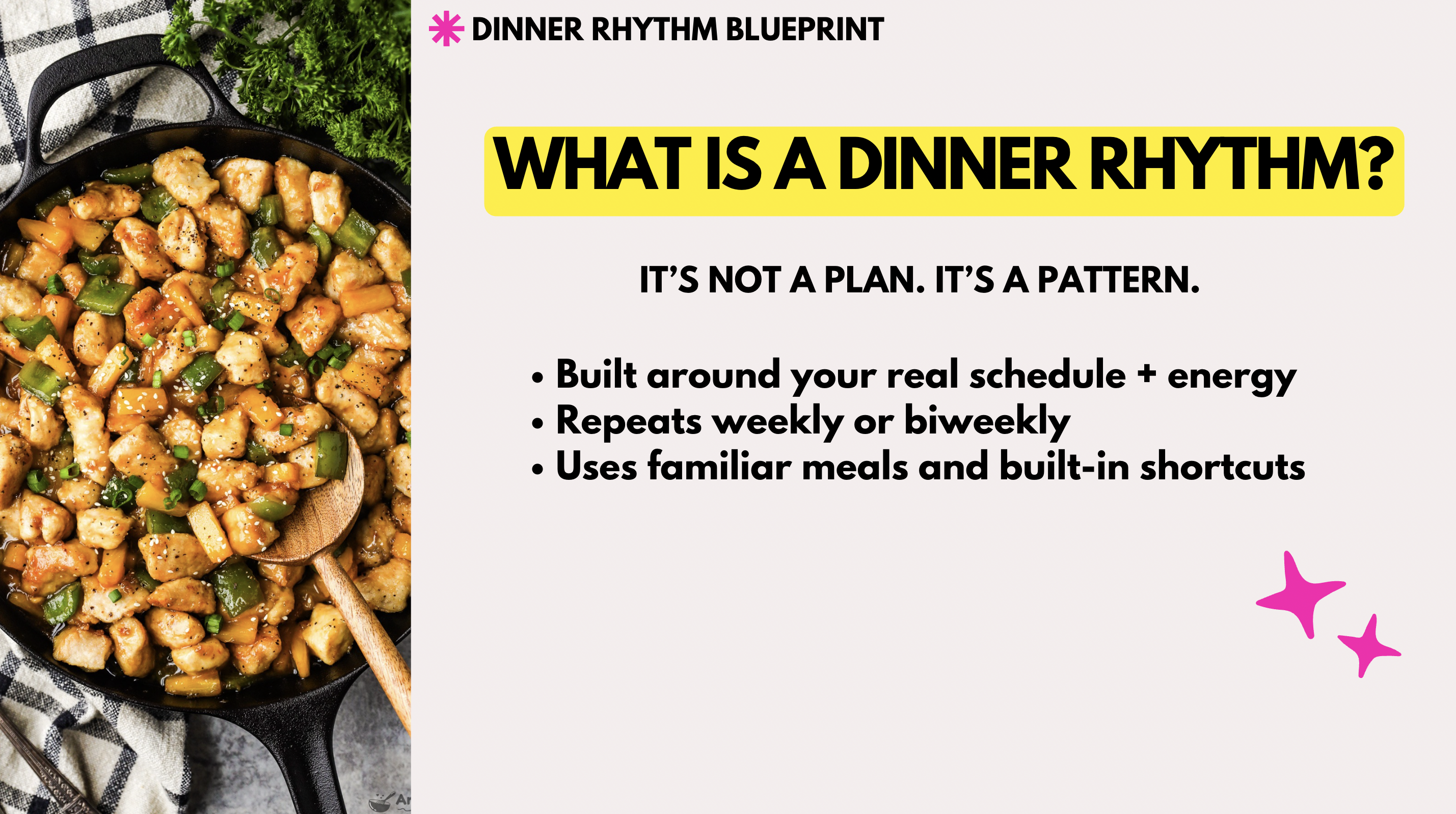
What a Dinner Rhythm Really Looks Like
So let's talk about what a dinner rhythm actually is.
First-let's start with what it's not:
- ❌ It's not a rigid meal plan.
- ❌ It's not a color-coded spreadsheet with 42 new recipes.
- ❌ And it's definitely not about cooking something brand new every night while jazz music plays and fresh herbs are magically on hand 🌿.
Here's the difference:
- 💡 A plan is something you have to stick to.
- 💡 A pattern is something that sticks with you.
👉 A plan says: "Here's exactly what to cook Monday through Sunday, no matter how you feel or what's happening."
👉 A pattern says: "Hey, Tuesday is usually your busy night-let's plug in something easy that always works."
A plan can fall apart the moment your kid gets sick, the power goes out, or you just hit a wall. That's exactly why traditional meal plans don't work for most families.
BUT a pattern bends. It adjusts. It absorbs real life and keeps going.
That's what a dinner rhythm is: a repeatable structure that aligns with your actual life-not your Pinterest board.
It might include things like:
- 🌮 A couple of theme nights (Taco Tuesday, Pasta Thursday 🍝).
- 🍕 A frozen pizza night or leftovers on your busiest day.
- 🍲 A flexible dinner that stretches across two nights (hello, chili).
But most importantly-it's about what you can cook consistently. One way to do this is with Anchor Meals-your autopilot dinners that hold the week steady.
This rhythm becomes your autopilot at 5:15 p.m. Instead of spiraling, you already know what the rhythm says. And the more you reuse and repeat it, the easier everything gets.
No more decision spirals. No more starting from scratch every week. Just simple, repeatable structure that makes room for real life.
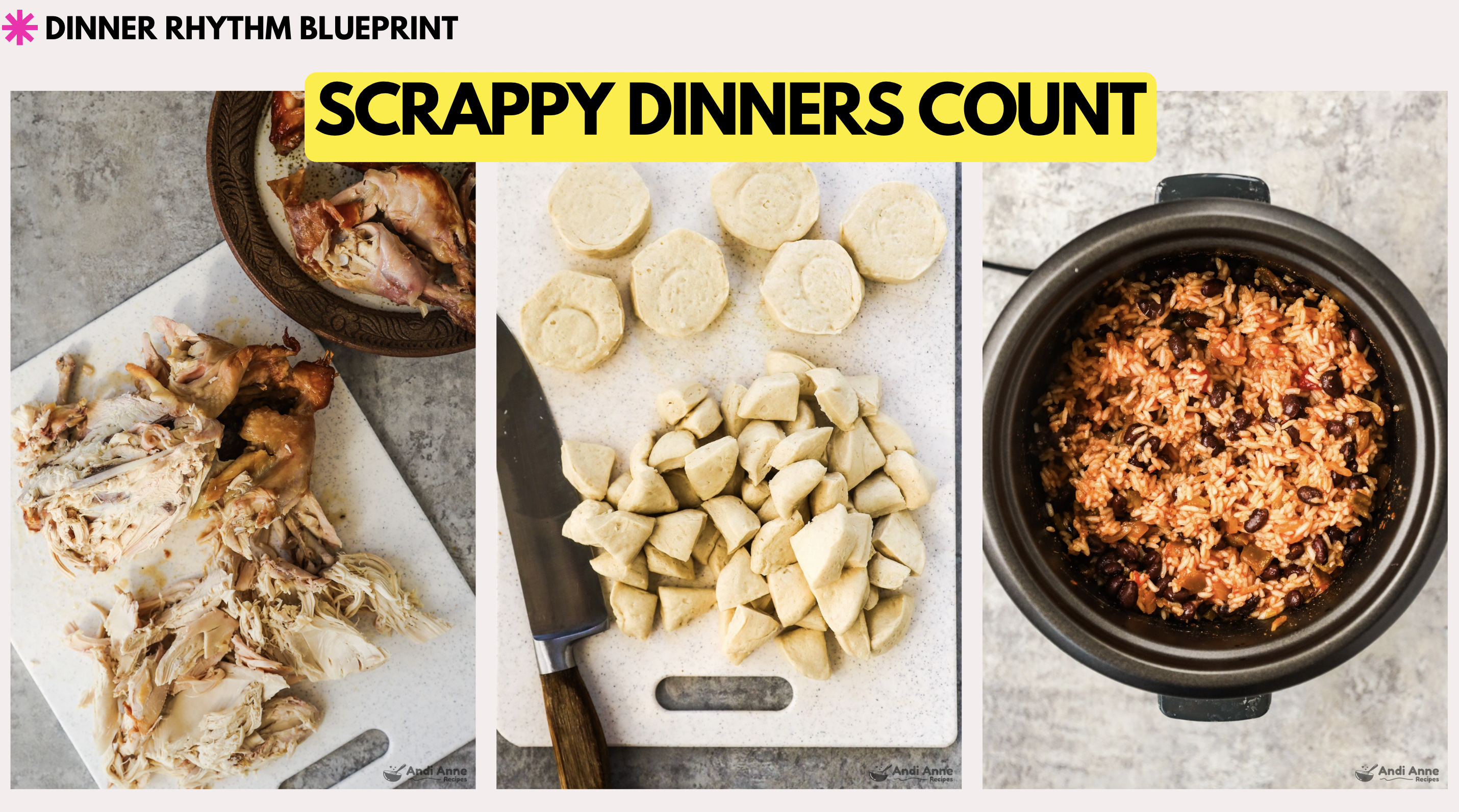
Your Current Reality Counts (Even If It's Scrappy)
Scrappy nights are often the lifesavers of the week. And honestly? My family loves these meals just as much as the "fancier" ones. That's why I build in Grace Nights-planned low-effort meals that give you space to rest.
Here are a few of my favorites:
- Rotisserie chicken magic 🐓 → Shred it for tacos, wraps, stir fry, or toss it into a pot of soup. That $10 chicken from the grocery store can stretch across multiple meals. Want ideas? Check out how to stretch leftovers into new meals.
- Bagged salad kits 🥗 → Don't underestimate them. Add leftover chicken, a can of tuna, or even some hard-boiled eggs and-bam-you've got dinner.
- Refrigerated biscuit dough 🍞 → Flatten it out for mini pizzas, bake it on top of casseroles, or make quick cheesy garlic rolls.
- Breakfast for dinner 🥓🥞 → Pancakes, scrambled eggs, bacon, cereal, smoothies-you name it.
- Grilled cheese + tomato soup 🍅🧀 → Simple, cozy, and everyone's happy. Bonus: kids can dip their sandwiches.
- Quesadillas in 10 minutes 🌮 → Tortillas, cheese, and whatever random leftovers are in the fridge. Done.
- Snack plates / "anything goes" night 🥒🧀🥖 → Crackers, cheese, apple slices, veggies with dip. Basically a DIY charcuterie board for the kids.
👉 None of these are "gourmet." But all of them get dinner on the table-and that's what counts.
This is not lazy. This is strategic. Because the less pressure you put on dinner, the more energy you'll have for everything else.
If you need even more inspo, here are 10 dinners for when you're too tired to cook.
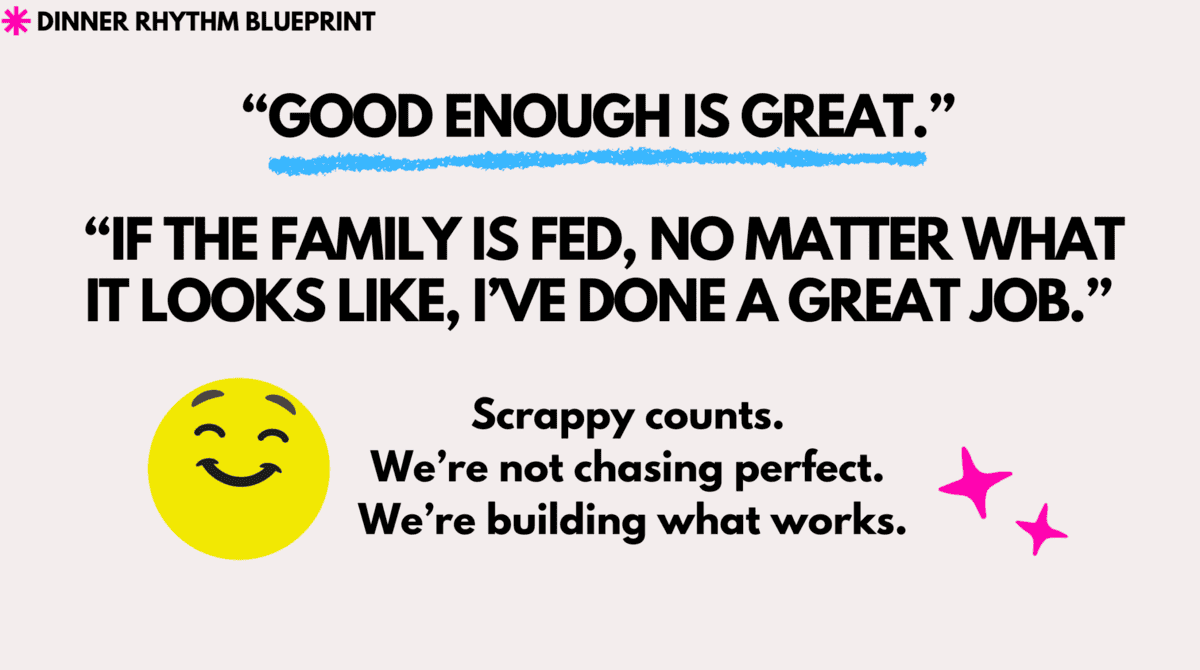
FAQs
A rhythm bends with your real life. A meal plan is rigid and falls apart when something goes wrong. A rhythm is flexible-it adapts, absorbs real life, and keeps going.
Nope. In fact, this method exists because most meal plans don't work for busy families. Instead of writing 7 new recipes in a spreadsheet, you build a repeatable pattern around your energy, your schedule, and your family's real food preferences.
Totally normal! A rhythm isn't about eating the same meal every Tuesday forever. It's about having easy go-to's (like tacos, stir fry, or sandwiches) that lower stress. You can rotate meals in and out, but the structure stays the same-so you aren't reinventing dinner every single night.
Not at all. Your rhythm can include leftovers, takeout, or even "figure it out" nights. The point is to plan for your real energy levels, not some perfect version of yourself. Scrappy dinners count, and they're part of the system.
That's exactly why this works. Instead of tackling new complicated recipes, you'll start with your "Anchor Meals"-the autopilot dinners you know by heart. Then you'll add Grace Nights and Emergency Dinners to give yourself breathing room. The goal is to make dinner easier, not harder. I'll teach you how to do this in all of these lessons.
That's normal. Every change meets resistance at first. But once your rhythm repeats a few times, your family will start to expect it-and complain less. (I dive into this more in How to Stick to Your Dinner Plan).
Final Thought
If at any point you've thought:
- "This seems too simple-am I doing it wrong?"
- "Shouldn't I be trying harder?"
- "Other moms probably make fancier stuff…"
Let me stop you right there.
👉 You're doing it right.
Simple is smart. Repeatable = sustainable.
If you've ever struggled before, here's how to actually stick to your dinner plan.
This rhythm isn't about impressing anyone on Instagram-it's about freeing your brain at 5:15 p.m. when everyone's hungry and no one feels like cooking.
So take a deep breath. Release the pressure. Start with what's real right now-even if it's frozen pizza and cereal-and know this: if your family is fed, you've already won. 🙌
This is your first step toward a dinner rhythm that works.
Don't stop here-head to Lesson 2: What's Left in the Tank Test to keep building your rhythm. And if you haven't yet, grab your free Dinner Rhythm Workbook-it's the easiest way to actually put this into action."
Next Up: The What's Left in the Tank Test
👉 Next up: we'll talk about The What's Left in the Tank Test-the tool that matches your dinners to your actual energy levels 👇👇
Dinner Rhythm Blueprint: Here's Your Roadmap 👇👇
📌 Part 1: Dinner Rhythm Overview (You Are Here 📌)
📌 Part 2: What's Left in the Tank Test
📌 Part 3: The Dinner Sanity Quadrant
📌 Part 4: The Dinner Rhythm Toolbox
📌 Part 5: Finalizing Your Dinner Rhythm
👉 Want the big picture? Start from the beginning on the Dinner Rhythm Blueprint Hub


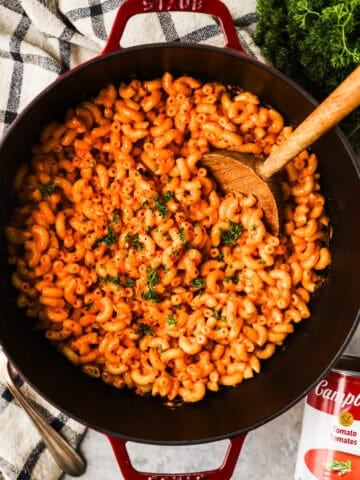
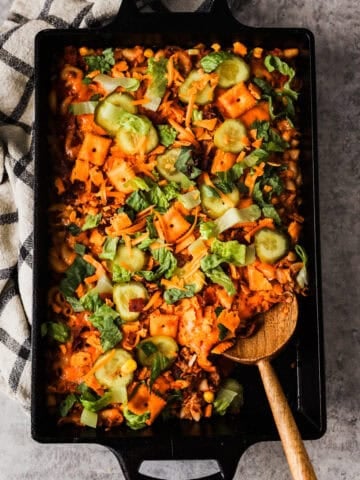
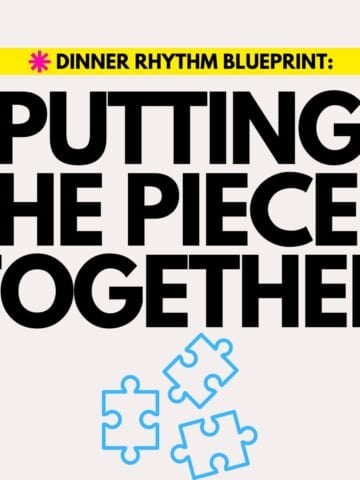
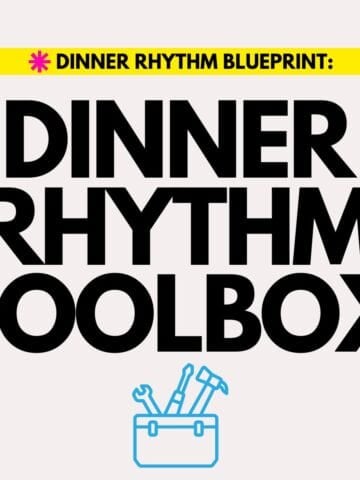
Leave a Reply